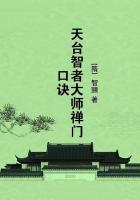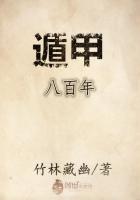SNEEZEWEED; SWAMP SUNFLOWER
(Helenium autumnale) Thistle family Flower-heads - Bright yellow, to 2 in.across, numerous, borne on long peduncles in corymb-like clusters; the rays 3 to 5 cleft, and drooping around the yellow or yellowish-brown disk.Stem: 2to 6 ft.tall, branched above.Leaves: Alternate, firm, lance-shaped to oblong, toothed, seated on stem or the bases slightly decurrent; bitter.
Preferred Habitat - Swamps, wet ground, banks of streams.
Flowering Season - August-October.
Distribution - Quebec to the Northwest Territory; southward to Florida and Arizona.
September, which also brings out lively masses of the swamp sunflower in the low-lying meadows, was appropriately called our golden month by an English traveler who saw for the first time the wonderful yellows in our autumn foliage, the surging seas of goldenrod; the tall, showy sunflowers, ox-eyes, rudbeckias, marigolds, and all the other glorious composites in Nature's garden, as in men's, which copy the sun's resplendent disk and rays to brighten with one final dazzling outburst the somber face of the dying year.
To the swamp sunflowers honey-bees hasten for both nectar and pollen, velvety bumblebees suck the sweets, leaf-cutter and mason bees, wasps, some butterflies, flies, and beetles visit them daily, for the round disks mature their perfect fertile florets in succession.Since the drooping ray flowers, which are pistillate only, are fertile too, there is no scarcity of seed set, much to the farmer's dismay.Most cows know enough to respect the bitter leaves' desire to be let alone; but many a pail of milk has been spoiled by a mouthful of Helenium among the herbage.Whoever cares to learn from experience why this was called the sneezeweed, must take a whiff of snuff made of the dried and powdered leaves.
The PURPLE-HEAD SNEEZEWEED (H.nudiflorum), its yellow rays sometimes wanting, occurs in the South and West.
TANSY; BITTER-BUTTONS
(Tanacetum vulgare) Thistle family Flower-heads - Small, round, of tubular florets only, packed within a depressed involucre, and borne, in flat-topped corymbs.
Stem: 1 1/2 to 3 ft.tall, leafy.Leaves: Deeply and pinnately cleft into narrow, toothed divisions; strong scented.
Preferred Habitat - Roadsides; commonly escaped from gardens.
Flowering Season - July-September.
Distribution - Nova Scotia, westward to Minnesota, south to Missouri and North Carolina.Naturalized from Europe.
"In the spring time, are made with the leaves hereof newly sprung up, and with eggs, cakes or Tansies which be pleasant in taste and goode for the Stomache," wrote quaint old Gerarde.That these were popular dainties in the seventeenth century we further know through Pepys, who made a "pretty dinner" for some guests, to wit: "A brace of stewed carps, six roasted chickens, and a jowl of salmon, hot, for the first course; a tansy, and two neat's tongues, and cheese, the second." Cole's "Art of Simpling,"published in 1656, assures maidens that tansy leaves laid to soak in buttermilk for nine days "maketh the complexion very fair."Tansy tea, in short, cured every ill that flesh is heir to, according to the ****** faith of mediaeval herbalists - a faith surviving in some old women even to this day.The name is said to be a corruption of athanasia, derived from two Greek words meaning immortality.When some monks in reading Lucian came across the passage where Jove, speaking of Ganymede to Mercury, says, "Take him hence, and when he has tasted immortality let him return to us," their literal minds inferred that this plant must have been what Ganymede tasted, hence they named it athanasia! So great credence having been given to its medicinal powers in Europe, it is not strange the colonists felt they could not live in the New World without tansy.Strong-scented pungent tufts topped with bright yellow buttons - runaways from old gardens -are a conspicuous feature along many a roadside leading to colonial homesteads.
GOLDEN RAGWORT; GROUNDSEL; SQUAW-WEED
(Senecio aureus) Thistle family Flower-heads - Golden yellow, about 3/4 in.across, borne on slender peduncles in a loose, leafless cluster; rays 8 to 12around minute disk florets.Stem: Slender, 1 to 2 1/2 ft.high, solitary or tufted, from a strong-scented root.Leaves: From the root, on long petioles, rounded or heart-shaped, scalloped-edged, often purplish; stem leaves variable, lance-shaped or lyrate, deeply cut, sessile.
Preferred Habitat - Swamps, wet ground, meadows.
Flowering Season - May-July.
Distribution - Gulf States northward to Missouri, Ontario, and Newfoundland.
While the aster clan is the largest we have in North America, this genus Senecio is really the most numerous branch of the great composite tribe, numbering as it does nearly a thousand species, represented in all quarters of the earth.It is said to take its name from senex = an old man, in reference to the white hairs on many species; or, more likely, to the silky pappus that soon makes the fertile disks hoary headed."I see the downy heads of the senecio gone to seed, thistle like but small," wrote Thoreau in his journal under date of July 2nd, when only the pussy-toes everlasting could have plumed its seeds for flight over the dry uplands in a similar fashion.Innumerable as the yellow, daisy-like composites are, most of them appear in late summer or autumn, and so the novice should have little difficulty in naming these loosely clustered, bright, early blooming small heads.














